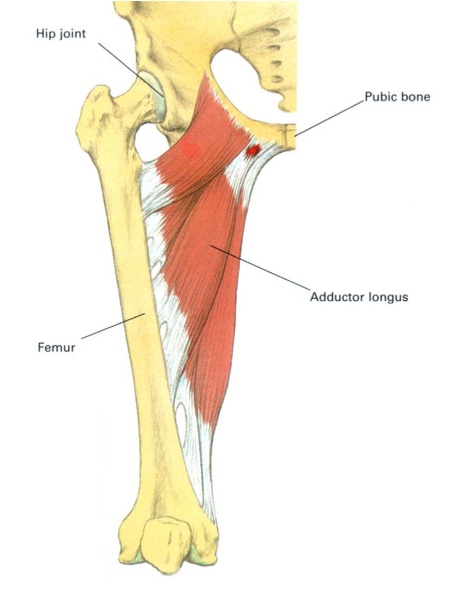The groin area, which houses your adductor muscles can be a very painful and troublesome area when injured. Chronic or acute pain in the area is often hard to treat and it is a common problem amongst athletes. An acute injury, or one that happens due to a certain event, if left untreated or rehabilitated poorly can lead to chronic issues. Adductor injuries by themselves are not serious, but they can often lead to long term issues which will severely impair athletic performance.
The muscles that fit into the adductor group are the adductor longs, the adductor magnus, the adductor brevis and the pectinous muscle. The one that is mostly damaged is the adductor longus. It starts at the the pubic bone and it inserts into the back of the femur.
There are two main types of adductor injuries that we will look at.
- Overuse of the Adductor (Chronic)
- Rupture of the Adductor (Acute)
Overuse of the Adductor
Overuse injuries are a problem in the groin area especially for people involved in sports where the adductor is continually under stress. The pain can be felt right at the origin of the muscle, as overuse injuries in this area tend to be more of a muscle tendon problem, and the tendons are located only close to the bone. For example people with this problem can touch the area near their pubic bone and will feel tenderness and pain. The problem area might refer and radiate pain down the groin. In an overuse injury it might just be felt initially and can be ok during activity, returning and getting worse and getting into a bad cycle.
Rest is the first and most obvious treatment, and the most effective in the case of a chronic groin injury. During the rest period the use of heat in the area, or even hot baths can help. Ensure that you keep your fitness up, and most importantly find out if you have any muscle imbalances or technique issues contributing to the overload on the area. We’ll talk more about specific rehabilitation in another post.
Rupture of the Adductor
The most common place for the tear of the muscle is closer to the femur, although they can happen near to the pubic bone. The tear could be partial or it could be complete. A tear in the adductor longus can happen when the muscles are overuse and tight, and an explosive movement is made, a sudden turn or an aggressive movement whilst the muscle is on stretch.
The pain is usually a stabbing pain in the adductor area. Swelling can occur if the tear is severe, but it might not appear right away. Initially the injury needs to be cooled down with ice, compression placed on the area and elevated. Rest must occur to ensure healing, and rehabilitation exercises need to be slowly integrated without pain. More on specific rehabilitation for an adductor tear will be covered in a later post.
Contributing Factors to Adductor Injuries
- Low flexibility
- Weak muscles in the areas (including glutes)
- Tight muscles in the area
- Bad technique/ posture and biomechanics
- Low fitness and fatigue
- Ineffective warm up
- Poor pelvic stability and core control
- Poor rehabilitation of previous injury
You want to avoid these injuries? Do the opposite to the points above. Warm up well, stay flexible and strong and ensure that your posture and technique are sound and you will be going a very long way to reducing your chances of an adductor injury, acute or chronic.

David Inglett says
I have identified a large calcium growth that surrounds the left longenis(?) tendon. Exrays from a open book fracture (12/7/2009) reveal the cloudy mass as well as CT’s taken at the same time and subsequently over the ensuing years. Having not been able to get a clear diagnosis of the cause for the severe pain I experience, I did a review of my exrays, self exam by manipulation and online research. The self exam revealed a large very hard bony mass surrounding the tendon and extending from the lower pelvic extremity. My orthopaedic surgeon confirmed my findings and is consulting with the teaching staff at The Medical College of Georgia (Augusta University – New name). He says he has never encountered this issue in nearly 30 years of practice. Is this rare and are there any treatments (surgical or physiotherapy) to aid in alleviating my extreme pain level?